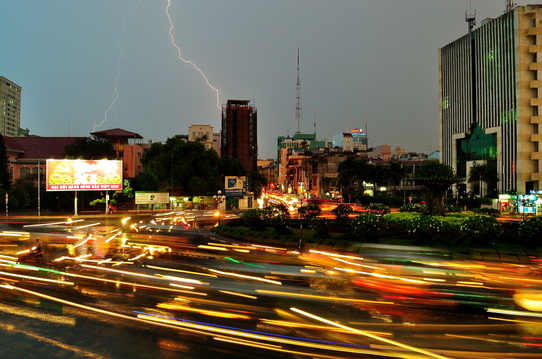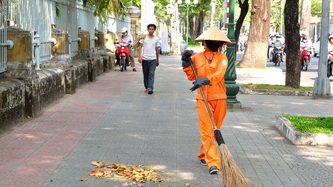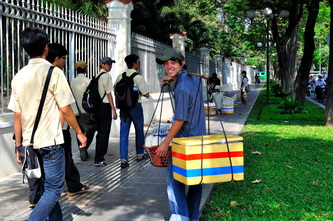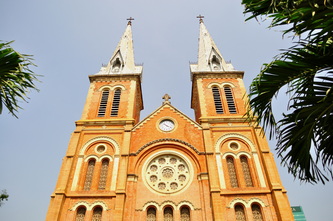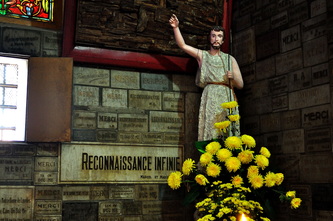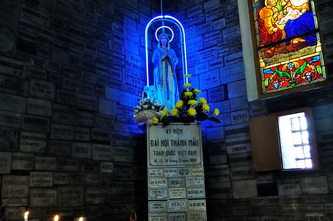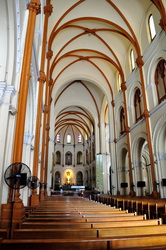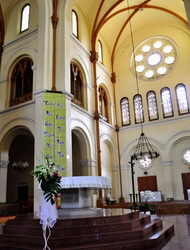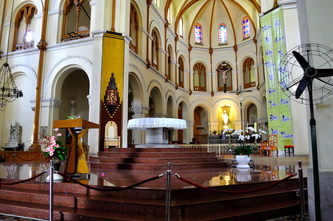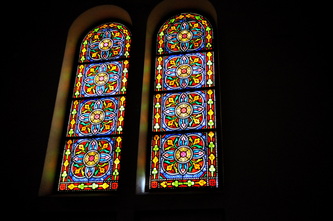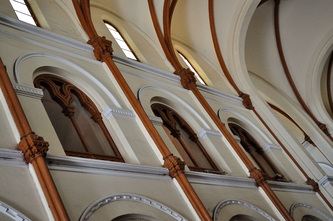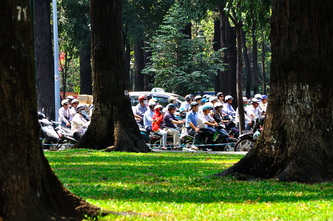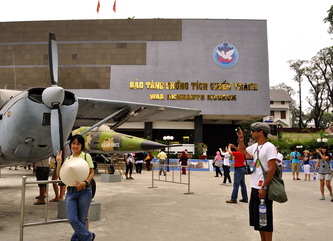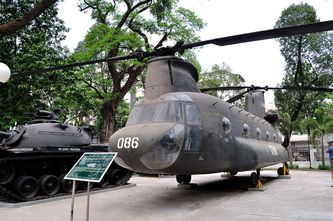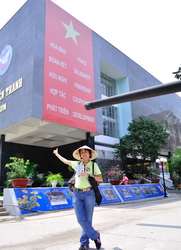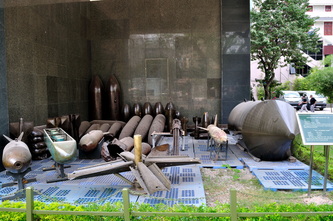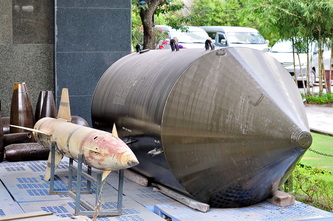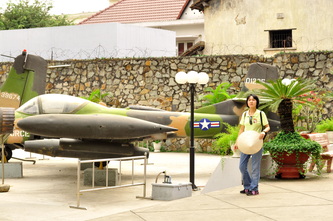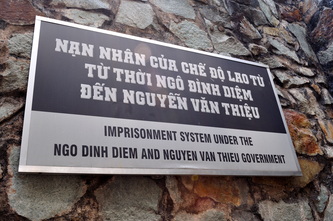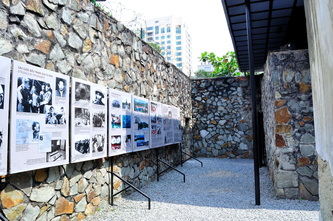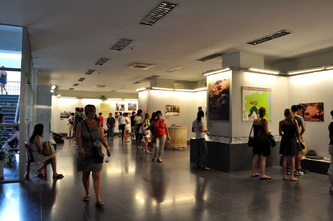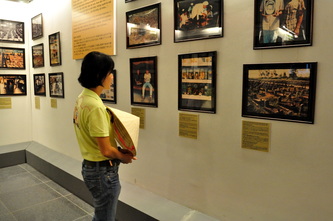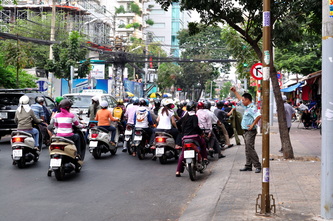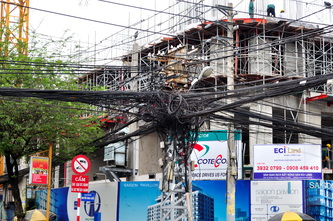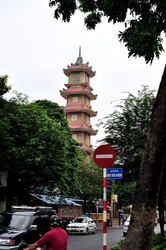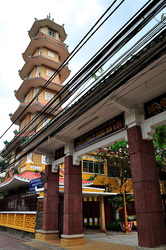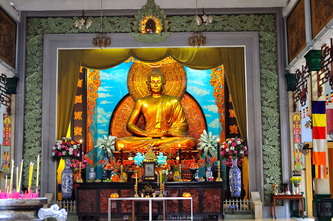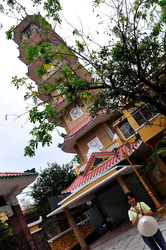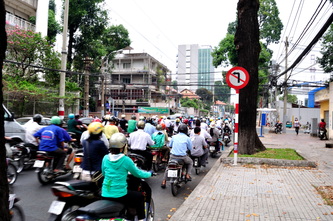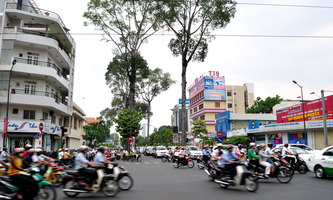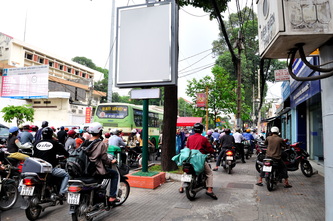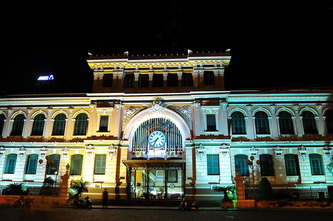"The wonderer and his Shadow!"
Notre Damme, War Remanent Museum, and pagoda, HCMC, Vietnam
I took this picture from a coffee shop, while were drinking a good of coffee glass. This afternoon the rain was really heavy, the storm brought a lot of thunder and lightning and the claps of thunder were really so noisy.
I know that some japanese people visit this blog, my sincere condolences to the earthquake and tshunamy victims.
Hope Everybody will be Safe.
Hope No More Dead People.
Hope Japan and Japanese People Get Well Soon.
Be Courageous. Don't Lose Your brave Spirit, dear Friends!!!!
Well, let's talk about my trip to HCMC (Saygon). The following pictures were taken the second day of my stay in this city. my wife and I visited The Notre Damme Cathedral, The War Remanent Museum The Post Office, and old pagoda and finally we came back to the Notre Damme Cathedral and to the Post Office to take some pictures during the night.
I want to remark that the entrance fee to any Museum o touristic place are really cheap, no more than Dongs 20,000 (less than USD 1).
After reading and watching pictures about Vietnam War, I got schocked; how cruel men can be, and how wild is the war!!!
IMPRISONMENT SYSTEM
Phu Quoc,
It is the biggest island in Vietnam with the area of 573 square meters in Kien Giang Province and 85 sea miles far from Rach Gia town. Phu Quoc is not only favored by nature but also famous for being a historical place with many legends.
In 1973, French colonists built "Cay Dua prison Camp" (Coconut tree prison camp) at the south of the island to house patriotic soldiers captured in North-Central-South battlefields. In 1956, saigon government rebuilt Coconut prison camp and turned it into "Cay Dua Political Correctness Camp" to hold political prisoners movet from "bien Hoa Political Correctness Center". This camp only operated until March 1957, though. After that, Sai Gon government build a new, bigger prison with the name "Phu Quoc prisoner-of-war Camp" which officially operated form July 6th, 1967. With the area of 40 ha. the camp was divided into 12 areas and imprisoned 40.000 patriotic soldiers. Each area was divided into 9 sub-areas, each sub-area has 11 cell, these areas were surrounded by barbed wires and had 12 sentry posts with extra-bright floodlights. Members of the machinery of suppression was chosen from brutal elements regularly trained by U.S advisor in physical and psychological torture tecniques against prisoners.
Soldiers didn't yield to cruel suppression and terror but resiliently hold many fighting activities such as: eliminating security guards, warders, military policemen; resisting "Open Arm" policy, arranging prison breaks to come back into the line of comrades for fighting... Due to cruel confinement, 4000 soldiers were killed. A series of excavation has discovered thounsands of remains and many mass graves of the prisoners.
Phu Qhoc prisoner-of-war camp is not only one of the evidences of aggressive war crimes but also a convincing proof of soldiers' resilence in the war against aggression to protect the country's independence and freedom..
TORTURE TECHNIQUES AGAINST PRISONERS:
Forcing the prisoner to roll on the grill inside-out.
Beating the prisoner with cane.
Beating the prisoner with pestle
Beating the prisoner with ray-tail whip
knocking at the oil drum
disembodying prisoners' teeth
Removing prisoners' toe nails and finger nails
Using a radiation light to cause prisioners to be blind
Holding prisoners in "tiger cage"
Special confinement
Burning sex organs
Burning prisoners' mouths
Piercing prisoners with nails
Breaking kneecaps off
Soaking prisoners'into boiling water pan
Pressing Plywood planks on prisioners' chests
Burning prisoners
Burying prisioner alive
Finally, in one the next pictures you can see the BLUE-82 SEISMIC BOMB.
Length: 3.35m.
Diameter: 1.37m.
The bomb was dropped from C.130 cargo plane. When exploding, it destroyed an area within a 100 metre radius and caused serius damge within a diameter of 3.2km. Used in Vietnam from 1970
